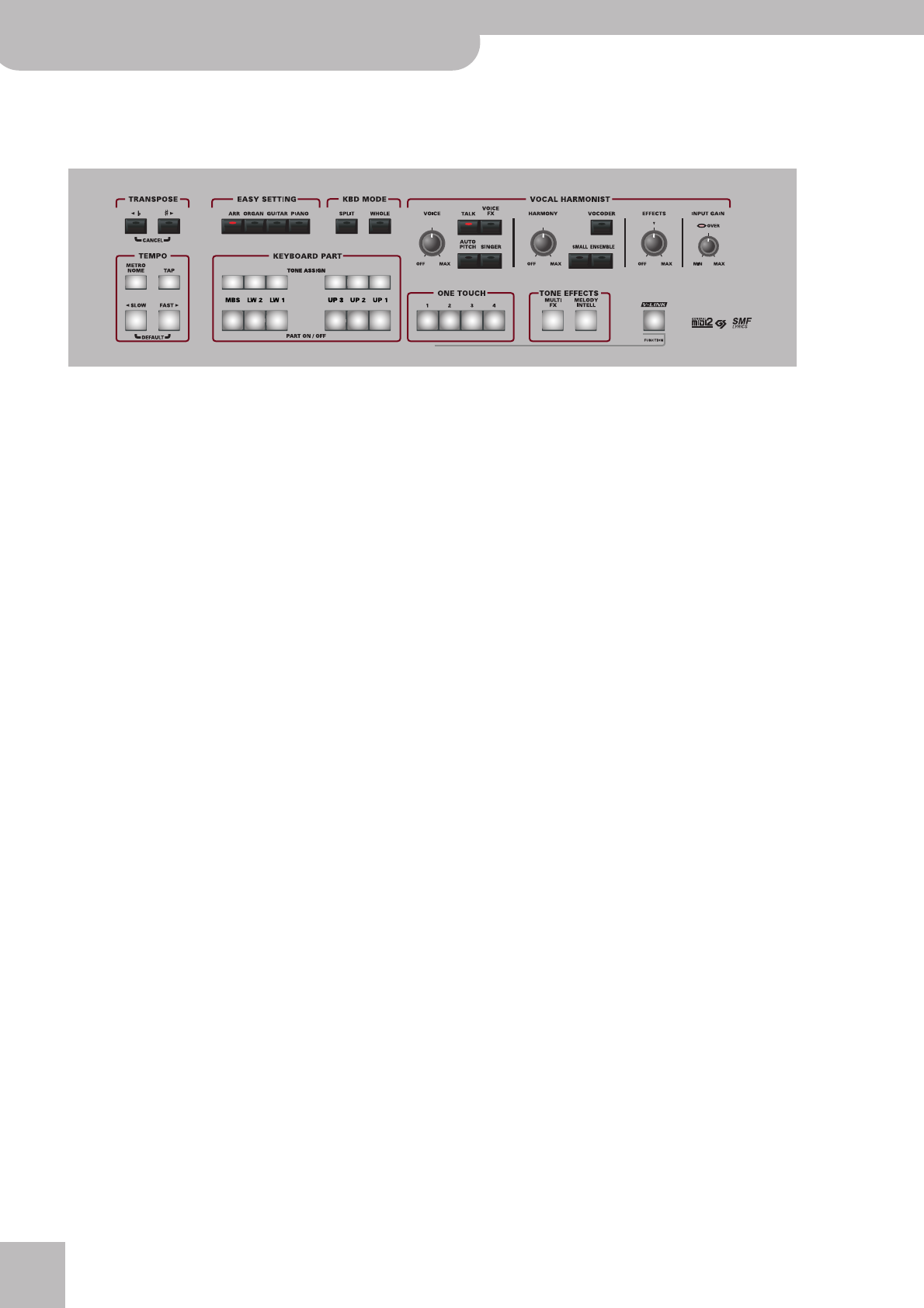
Panel descriptions
16
r
E-80 Music Workstation
Press the [HARMONIC¥BAR] button to activate the
“Harmonic Bar” section whose sound can be set using
the assignable sliders (U) that double as virtual har-
monic bars.
b
TRANSPOSE section
These buttons allow you to transpose the E-80 up
([]) or down ([ƒ]) in semitone steps. You can also
specify which parts are to be transposed (page 66).
If neither button lights, no manual transposition is
used.
c
EASY SETTING section
This key pad allows you to reconfigure the E-80 by
pressing just one button: [ARR] (use the Arranger in
split mode), [ORGAN] (the name says it all), [GUITAR]
(select the E-80’s Guitar Mode, p. 36), and [PIANO]
(assign a piano sound to the entire keyboard). See
also page 64.
d
KBD MODE section
Press the [SPLIT] button if you want to play different
sounds with your left and right hands (page 64). (It is
even possible to add a second split point, see
page 99.)
Press the [WHOLE] button to assign one or several
sounds to the entire keyboard (without a split). See
page 64.
e
VOCAL HARMONIST section
The buttons and knobs in this section are used to set
the Vocal Harmonist function, the microphone level
and the effects applied to the signals received via the
Vocal Harmonist MIC INPUT socket. See page 46.
f
TEMPO section
[METRONOME] button: Press this button to switch
the internal metronome on or off.
The remaining buttons allow you to set the tempo of
the metronome, the Arranger or the recorder/
sequencer.
g
KEYBOARD PART section
The TONE ASSIGN buttons are used to specify the
Keyboard part you wish to assign a different sound to
page 29. “Keyboard parts” are the parts you can play
yourself. The E-80 contains many other parts that are
played “automatically” by the Arranger or Recorder.
The PART ON/OFF buttons allow you to switch the
desired Keyboard parts on and off.
h
ONE TOUCH section
These buttons allow you to select the desired One
Touch memory. There are four memories per Music
Style. They work a lot like the User Programs, because
they assign different sounds and effects settings to
the Keyboards parts and carry out some other
changes. See page 87.
i
TONE EFFECTS section
Press the [MULTI¥FX] button to add a different effect
to the Keyboard parts (page 111). (This processor is
also available for the D Beam and the MELODY INTELL
parts.)
Press the [MELODY¥INTELLIGENCE] button (so that it
lights) to add an automatic counter-melody (second
and third voice) to your solos or melodies (see p. 84).
j
V-LINK button
Press this button to take advantage of the E-80’s V-
LINK functionality for controlling video material via
certain performance functions and the right-most
keys on the E-80’s keyboard. By using V-LINK-com-
patible video equipment, visual effects can be easily
linked to and made part of the expressive elements of
a performance. By connecting the E-80 to an
optional Edirol DV-7PR or V-4, you can switch images
in synchronization with music or use the E-80’s per-
formance functions or right-most keys to switch
clips, control playback speed, etc.
c
gfhij
dbe
